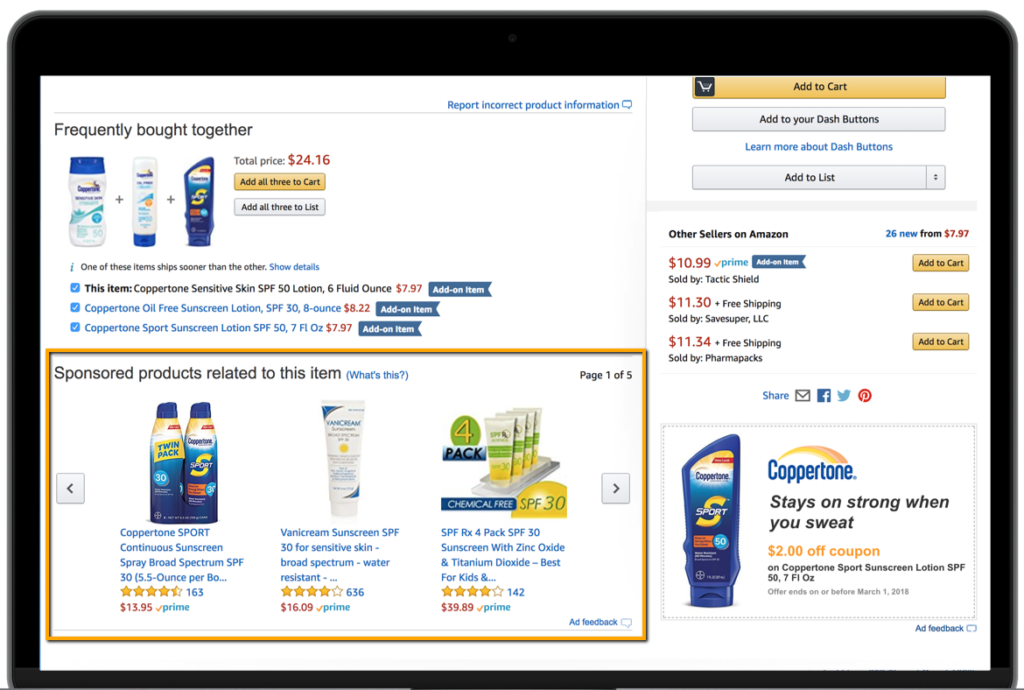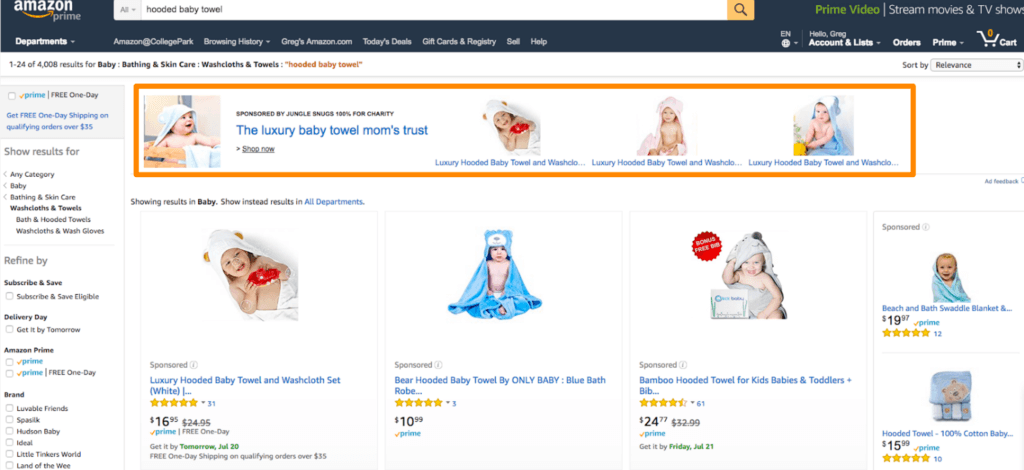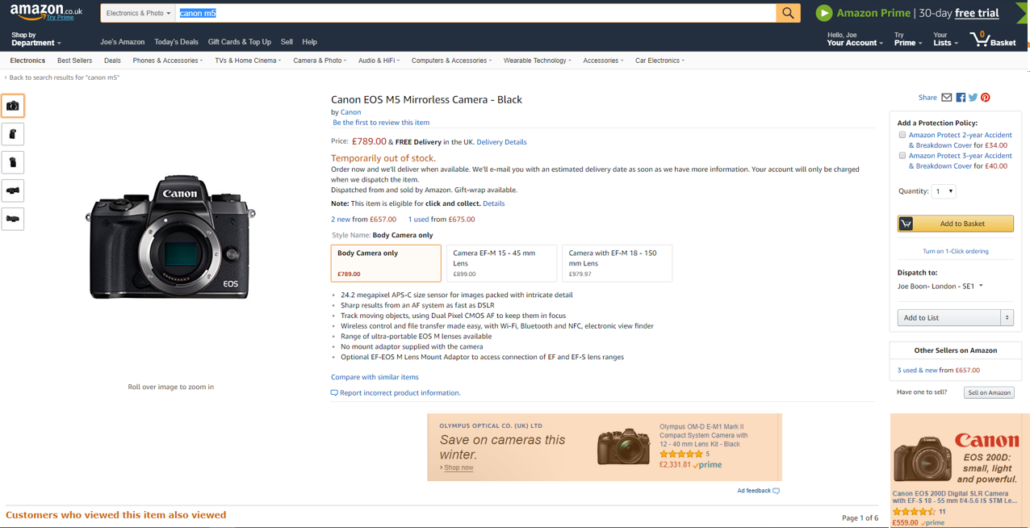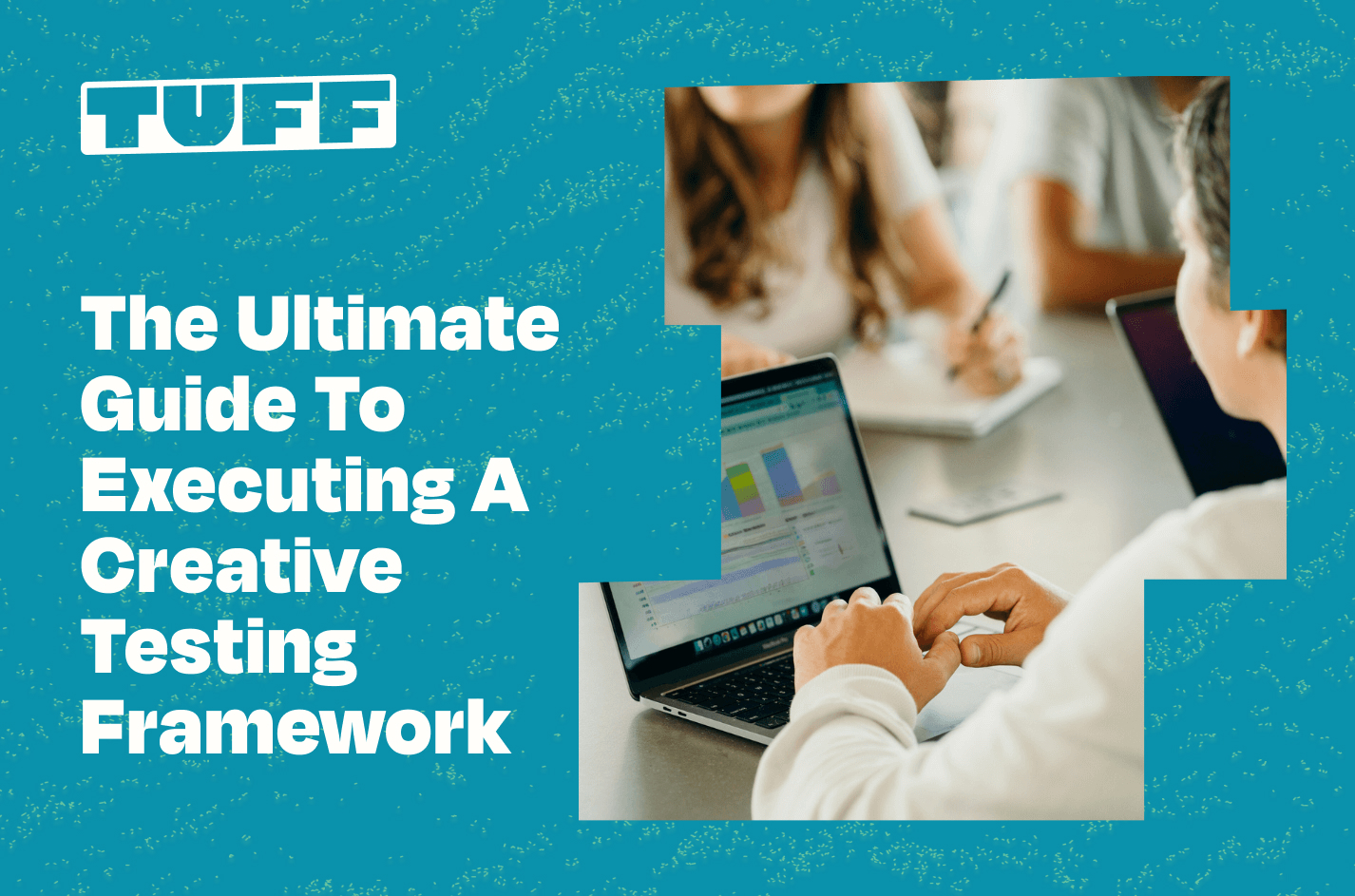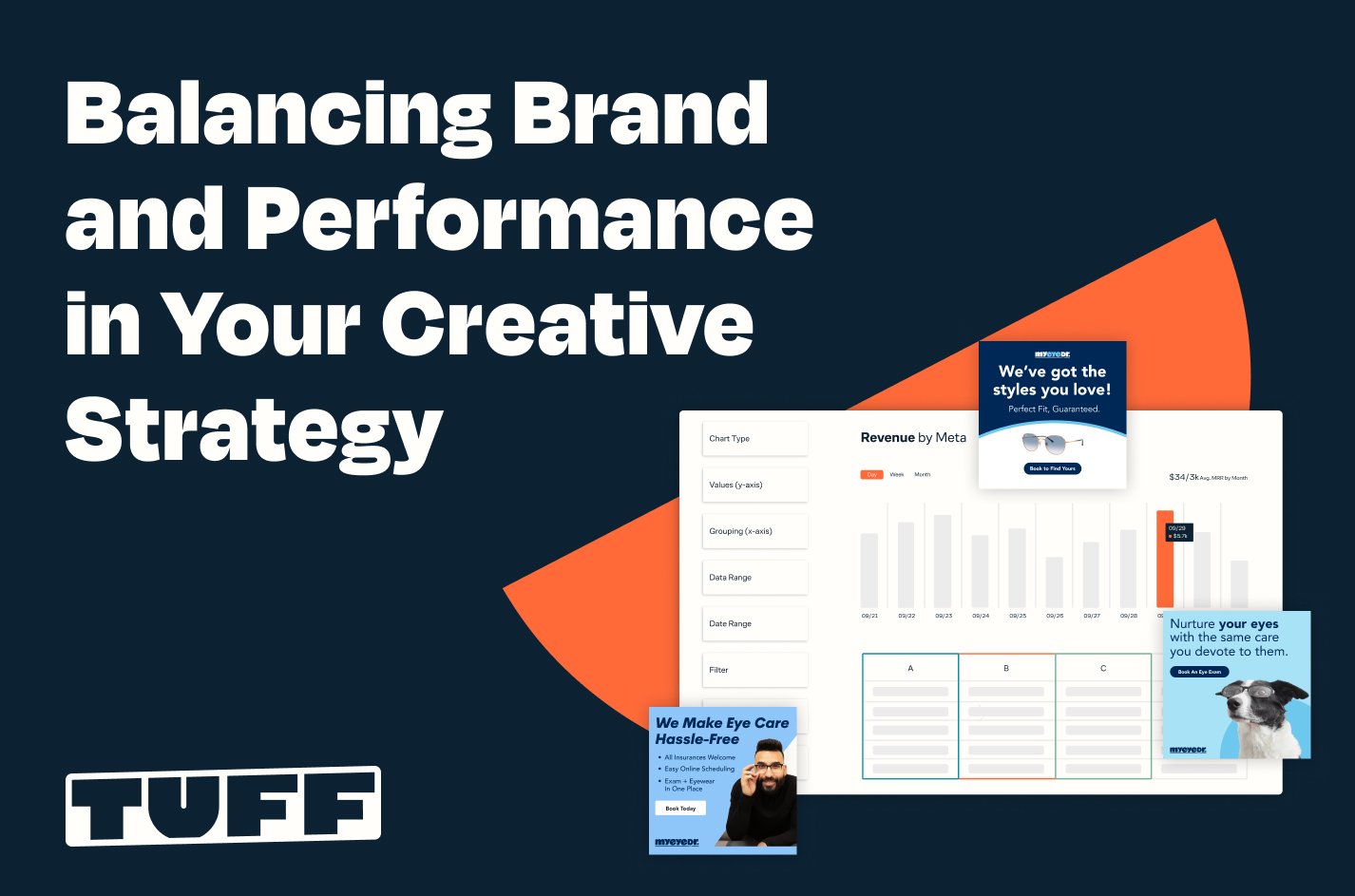A Step-by-Step Guide to Scaling Your ECommerce Business
Editor’s Note: This post has been updated with new links and fresh content.
Original Publication Date: October 29, 2019
We created this guide to serve as a sort of one-stop-shop for understanding the components necessary to supercharge your existing eCommerce strategy, including how you can grow your sales profitable overtime. From learning how to setup Google Shopping campaigns to more advanced eCommerce SEO tips and tricks, we cover key traffic strategies to help you sell more online.
Let’s dive in!
ECommerce PPC
The basics of PPC (pay-per-click) advertising are fairly simple: Instead of paying a flat rate to place an ad in one spot, you create an ad and then pay the publisher (usually a search engine like Google or Bing) every time someone clicks on it. PPC is essential for eCommerce businesses because it drives traffic directly to your website and, in the case of paid search ads, usually captures an audience that is already looking to make a purchase (aka has high commercial intent!).
Here are five keys to maximizing the impact of your eCommerce PPC strategy:
1. Understand How Google Shopping and Amazon Advertising Work
Google Shopping has been around in some form or another for nearly 20 years now, but in 2012, it became a more organized and monetized service. It functions much like a marketplace in that it serves up a variety of products from different brands that match a user’s search query.
However, rather than conducting all business within the platform like Amazon, eBay, or Etsy, Google Shopping merely aggregates options for the searcher. When a user clicks on a product, they’re taken to the retailer’s site to complete their purchase. It’s a way for consumers to shop for an item across multiple brands without the hassle of toggling among a half dozen websites.
Much like Google Ads, there is a bidding system in place for Shopping that determines your ad’s placement on the SERP (search engine results page). We’ll talk more about how to develop a smart strategy to approach this bidding process a bit later in this article.
Some of the benefits of advertising on Google Shopping rather than just sticking with paid search ads include: the opportunity for your product to appear multiple times in a given search (as a website result, a text-only PPC result, and a Shopping result); the chance to stand out from the competition with the use of visual imagery in an otherwise text-heavy experience; and the reality that Shopping ads have 30% higher conversion rates than text-only ads.
Amazon advertising is a bit of a different beast. Chances are you’ve spotted these ads if you’re an avid Amazon shopper. When you input a search query, the results page will have some items that are very subtly marked with “Ad” or “Sponsored” just beneath the product image.
They can also appear in sidebars and the “related to this item” roundups at the bottom of individual product pages. In addition to these Sponsored Product ads, Amazon also offers Headline Search and Product Display advertising options. They’re all priced using a cost-per-click method, but there is a lot of granularity in how you can manage campaigns for each of them (more on that below).
If you’re selling a product online and don’t have it strategically marketed in these two spots, you’re missing an opportunity. Let’s dive more into how to make these two types of PPC placements work for you and help you close that gap.
2. Set Up and Structure Accounts on Each Platform
To set up an account with Google Shopping, you’ll need to visit their Merchant Center. (Note: you’ll need a Google account of some sort, such as Gmail, to sign up.) From there, you’ll enter your business information and select the programs that fit your specific business goals.
This is where you’ll select which type of Shopping ads you want to develop. The Product Shopping ad option lets you include an image of one product, a title for it, its price, and your business name. It will appear when people search for a term specific to that product (e.g., red high top sneakers).
A Showcase Shopping ad gives you the chance to share a little more information about your brand, as it allows you to group related products. These tend to pop up when a consumer searches for a broad term that aligns with your business (e.g., sneakers).
The last option’s utility is a bit more niche. The Local Catalog ad option is a way for brands to highlight store-specific inventory in the searcher’s location. This can be very useful for businesses aiming both to boost eCommerce and to drive traffic to brick and mortar stores.
From here, you’ll enter product information in your data feed and populate your campaigns. Google has a helpful onboarding guide that will assist you in setting everything up and navigating your dashboard to control your campaigns and manage your account settings.
To set up an account for Amazon advertising, you’ll first need to have a vendor account. If you don’t have one yet, you can check out the pricing options here. Once you have that established, your next step will be to determine what type of ads you want to utilize in your Amazon campaigns.
Sponsored Product ads are keyword-targeted and allow you to control your daily budget and campaign duration. You can also pause campaigns at any time.
Headline Search ads display in search results as a banner ad and redirect to a branded page. They’re also keyword-targeted, but you can use them to promote multiple products at once. There is a minimum spend of $100 on these campaigns, and you can set them up as much as four months in advance.
Lastly, there are Product Display ads. These are not keyword-targeted like the others, but rather interest- or product-targeted. You’ll choose from a long list of interests to target your ad to relevant shoppers.
3. Navigate Google’s Bid Types
If you know your sales goals and have narrowed down a cost per sale target, when it comes to selecting your bid strategies in Google the question comes down to this: How much control do you want? While there are over a dozen bidding strategies for Google, here are three popular ones to consider at each end of the “control” spectrum:
Full Control: Manual Cost Per Click (CPC)
Manual CPC bidding gives you control to set the maximum amount that you could pay for each click on your ads – and setting individual bids at the keyword level allows for the highest level of control. If you have the time and resources, we recommend starting here. Manual CPC bidding allows you to closely monitor your performance and make sure that none of your ads are overspending.
Some Control: Maximize Clicks
Maximize clicks is an automated bid strategy that sets your bids to help get as many clicks as possible within your budget. With this strategy, Google will work to get you as many clicks as possible within your daily budget. If you are trying to build your brand or have a website with an incredible conversion rate that holds at scale, try this out. Otherwise, stay clear because the quality is hard to control or regulate. Google is trying to get you as many clicks, not as many quality clicks.
Little Control: Target CPA
With target CPA, Google uses historical information about your campaigns and evaluates the auction to find an optimal bid for your ad each time it’s eligible to appear. Google has complete control – you can’t leverage bid modifiers, favorite keywords, push spend to mobile, etc. Google will push tCPA hard because it allows them to automate your entire budget. While it seems nice from a management perspective (once you set it up you don’t have to optimize as frequently), we’ve found that CPA bidding is much more effective on display versus search. Either way, one thing to remember even if you’re using fully automated bidding – nothing should ever be set on auto-pilot.
4. Focus on Mobile Speed First
It’s no secret that a huge portion of consumers’ online shopping is taking place on mobile devices. While you can’t ignore desktop optimization, your first priority should be to ensure that your mobile site can keep up.
If your checkout experience is anything but fluid, customers will leave your site. Remedy this by making sure you’re offering seamlessly integrated payment options like PayPal, Apple Pay, and Amazon Payments, which are all optimized for mobile shopping.
Similarly, if your pages take longer than a few seconds to load, customers will abandon your site. Test your site response times with this handy tool.
Set the speed to 3G and use that as your baseline for improvement. You may think your connection is faster than that, but setting it this low will ensure that no matter how busy or crowded the network is, mobile users can swiftly navigate your site.
5. Ramp Up Remarketing With Display
The last element of getting the most out of your PPC budget is developing remarketing campaigns. This unique type of advertising allows you to target users who have already visited your site.
The obvious benefit here is that you’re marketing to people who have already shown an interest in your brand. Additionally, because they’ve visited your site, you have more data about this audience segment. Which means you can craft campaigns with more specificity and granularity than if you were marketing to someone totally unfamiliar with your products. Google gives you multiple options for how to leverage this type of advertising.
ECommerce Paid Social
Social media is so ubiquitous these days that nearly every business has established its presence on the major platforms. But is having a presence really enough? Your team probably has a complex strategy and management system for your social media content, which is important, but don’t overlook the impact you can make by including paid social advertising in your budget as well.
1. Conduct User Research and Build Audiences
One of the biggest benefits of advertising on social media is the goldmine of data it provides. The insights you’ll gain from examining the people who interact with your brand will inform your entire marketing strategy going forward. Dig into the numbers and patterns to find out who your customers really are.
On top of the valuable research angle, paid social also allows you to build audiences and target segments of your customer base (and potential new customers) more directly. Here’s a breakdown of the most important types of audiences you can build.
Custom
Build this audience by matching customers already in your system with their social profiles. You’ll ensure you’re reaching those customers not only through email marketing but also in the social spaces where they’re spending so much of their time. This is how retargeting audiences are built which we’ll get into later on.
Interest
This option allows you to create a group of consumers to target whose interests align with your product offerings. It differs from building a custom audience in that it seeks primarily to prospect to users that may not yet be familiar with your brand.
A great first step in determining an interest based audience is to do a Google Analytics behavior analysis to determine key age groups, geographies, genders, interests, and online behavior like type of device used when visiting your site or app.
Getting too granular can be an issue with interest based audiences. If your audience size is too targeted (typically less than 10,000 users) costs for your social ads can go up as social ads struggle to find enough people to see your ad. People in a small audience may see your ad too many times leading to poorer and poorer results over time.
Lookalike
Lookalike audiences give you the chance to create a profile of your current customers in an effort to reach others like them. These are similar to the interest based audiences, but allow for significantly more granularity. This experiment showcases some of the distinct differences in targeting each group.
Lookalike audiences are especially effective when segments within them can be layered like geography, age groups, and interests.
Lookalike audiences can be created using either an email list, they can be based on web traffic to your site, or by actions they take on your social media channels like following, or engaging with posts.
Retargeting
Often overlooked on social advertising but critical to success is retargeting. Retargeting will serve social ads to people who have already visited your site, or better yet, taken a key action like initiate checkout, subscribed, or viewed key content, like a product or resource page.
When traffic to your site is high enough, retargeting can be segmented by date ranges, and actions they took. These users are then served ads that closely reflect the experience they had on your site, and encourages them to return to take action.
Overlap and Exclusions
To squeeze even more efficiency out of your social ads, avoid audience overlap. Audience overlap is when two separate campaigns or ad sets are serving ads to the same users. This means you’re competing for the same users from the same ad account, which will cause your advertising costs to go up.
Facebook has very graciously provided an audience overlap tool so advertisers can see just how much their audiences overlap. Ideally, there will be no audience overlap, however, that can prove quite challenging. As a rule, always aim be below 10% audience overlap.
To avoid audience overlap, add exclusions to your ad sets. The audiences anticipated to have the best conversion rates should have the fewest exclusions. For instance, here’s an example of how audience exclusions would look for a Facebook Ads eCommerce account:
- Cart Abandon Audience
- Exclude purchases in last 90 days – this is so people who’ve recently purchased aren’t served ads, considered a best practice.
- Retargeting Audience
- Exclude purchases in last 90 days
- Exclude cart abandon audience
- Purchase Lookalike Audience
- Exclude purchases in last 90 days
- Exclude cart abandon audience
- Exclude retargeting audience
- Interest Targeting Audience
- Exclude purchases in last 90 days
- Exclude cart abandon audience
- Exclude retargeting audience
- Excluded purchase lookalike audience
You will see here that the interest based audience has the most exclusions because the prior three audiences are anticipated to have the best performance. Done in a vacuum, users would only be seeing ads from one of these audiences, which will essentially eliminate all audience overlap.
2. Optimize for Clicks and Sales
Even if you’ve built beautifully curated audiences, you still want to make sure what you’re spending on social is providing good ROI, right? You can’t skip out on the important steps of clearly defining your objectives, optimizing your settings, and selecting the right bid strategy.
Prioritize consideration (clicks) and conversion (sales) above all else to ensure that your ads are being served up in the right ways and at the right times. When it comes to optimization, be very specific about what you consider success for this campaign.
The algorithm is intelligent, but it’s not human. Make sure your selected objective drives clicks and sales, as the algorithm will ultimately only do what you tell it to do.
Lastly, take a look at your bidding strategy and budget, as this will tell the algorithm what you’re willing to spend on each impression. Decide what’s more important: giving the algorithm the freedom to reach a much wider audience, or keeping tight control over how much you’re spending per optimization.
3. Creative Copy for eCommerce Social Ads
To sell via social ads on channels like Facebook, Instagram, and Twitter, you have to have copy and creative that draws your audience in. You must remember your audience is on social media for personal enjoyment, so your copy and creative will need to coax them out of the comfort of their scroll or swipe, and convince them to act.
Below we talk about dynamic retargeting, which is one of the most effective ad types on e-commerce because it’s showing a user a product they are already interested in. Your dynamic retargeting ads should have copy that includes an incentive to return ad act. e.g. “Free shipping for a limited time; $10 Off with offer code 10RIGHTNOW; etc.,
Your dynamic retargeting can be dialed, but if your top of funnel prospecting campaigns using lookalike and interest based audiences are not bringing in traffic to feed your dynamic retargeting campaign, then you may never see success.
Prospecting copy will introduce your audience to your product, a benefit should be expressed early, and the product should be clearly presented in the ad or video imagery. The best practice is to test multiple creatives per audience, turning off any ads with creative that don’t resonate with the audiences you are targeting.
Using Real Photos as Social Proof
Social proof is a powerful weapon that every marketer should have in their arsenal. The concept behind it is that consumers will alter their behavior based on “proof” from their peers that a product or service is worthwhile. There are lots of different ways to integrate social proof into your paid social, but we find that using actual photos is an especially compelling one.
It can be tempting to use glossy stock photography in your paid social. After all, you can find some impressive images through those channels. But authenticity and genuine customer connection often don’t come along with them.
Take the time to create dynamic imagery of your own. This could be of your products, influencers, endorsements, accolades, or behind-the-scenes peeks of your team at work. Prove to consumers that your brand is worth not only investigation but an investment.
When It’s Time to Update Your Social Ads
Knowing when to update your ad creative is both an art and a science. We write about triggers to watch for to know when it’s time to update your Facebook and Instagram ad creative, here.
In a nutshell, you will be looking at a variety of metrics like costs, results, frequency, and more. Facebook provides trendlines of costs and results for campaigns, ad sets, and ads, in the ads manager, which can be a nice visual indicator of costs going up, and results going down — the key trigger for rethinking eCommerce social ads creative.
4. Ramp Up Remarketing With Dynamic Product Ads
Just as with paid search, remarketing should be an important part of your paid social strategy. Retargeting this unique audience that has already visited your site but failed to convert requires a special approach. On social, we suggest using dynamic product ads to reach them.
A dynamic product ad will look like any other ad you place on social, but instead of creating unique ads for each item you want to promote, these dynamic ads allow you to build a template. From there, you can drop in product information and imagery that is specific to the audience you’re trying to retarget.
When a consumer in this segment views your ad, it will populate with information on the specific products they visited on your site. The intention here is to spark their memory and entice them to come back and complete a transaction with you.
Ecommerce SEO
Ranking well on the major search engines is a huge part of the battle when it comes to scaling your eCommerce business. That’s why SEO is so incredibly important. Any good eCommerce growth marketing strategy will put considerable effort into fine-tuning your website to optimize this performance metric. There are four main steps you need to undertake when evaluating your SEO approach.
1. Conduct a Site Audit
This is your opportunity to see under the hood of your website’s on-page SEO performance. It will give you a benchmark for where you are now and let you know what is and isn’t working with your current strategy.
There are a number of great audit tools available these days. They’re each priced differently, and they’ll have varying strengths and weaknesses. We suggest choosing the combination of tools that performs best for the metrics you’re looking to evaluate.
2. Research the Best Keywords for Your ECommerce Site
Keywords are the primary driver of good SEO. You may feel like you have a good idea of what keywords you want to rank for, but just going on that hunch will not help you unlock the kind of growth you’re looking for. You need to dig deeper.
Take every page on your website and research the optimal keywords for each one. Yes, this will take time, but we promise it’s worth it! Prioritize mapping the most important pages on your site first, so pull up your Google Analytics account and figure out which pages are the top sources of revenue for your site.
From here, focus on unearthing the very best head and long-tail keywords for those pages. For head keywords, it can help to figure out what keywords you’re currently ranking highly for and what other sites and pages are ranking highly with you.
This research will give you insight into what consumers are looking for when they search for that term. You want to select a head keyword that you can be competitive for and one that is tangibly driving folks to your site.
Long-tail keywords, alternately, give you an opportunity to rank for more detailed terms that are likely more specific to your business. They will have significantly less competition than broader terms (think “black dress” versus “black cocktail dress with sequins”) and therefore can be a cost-effective way to get more eyes on your site.
There are a number of keyword explorers you can use to help find these long-tail search terms, but you can also DIY a bit by typing a broader search term into Google and seeing what it auto-suggests for more specific terms. You can also look at the results in the “people also ask” box as well as the “searches related to” area at the bottom of the SERP.
3. Optimize Your Meta Titles, Descriptions, and H1s
You’ve got your keywords set. Time to update your titles, descriptions, and headings to help support the structure you’ve built and drive visitors to those pages. Writing completely unique copy for these for every single page on your site would take forever, but don’t fall for the claim that it’s okay to use a single template and apply it sitewide.
Instead, approach it like you did your keyword research, and first find the most important pages on your site (those that rank in the top 10 for a particular keyword). For each of those, craft a specific meta title, description, and heading. You can use a loose template for the other pages by grouping them into related categories and assigning a meta title, description, and heading to all the pages under that umbrella.
When creating the copy here, make sure you’re always using that head keyword you chose, as well as putting in some of those long-tail keywords where they make sense. You also want to make sure you’re using compelling and actionable language (e.g., “buy,” “click,” “sale,” “free”) as well as plugging any unique perks you provide the customer, such as free shipping or free returns.
4. Create Valuable Content and Hub Pages
Getting eyes on your product pages is the ultimate goal of eCommerce marketing, but it’s also the biggest challenge. If you approach it correctly, though, your content marketing will drive business continually back to those pages, increasing your conversions.
People love clicking on sources that provide them with quality information, especially if they relate to a niche topic. Blog posts are a great way to provide that value and attract visitors to your site. And while they’re there, you have the opportunity to direct them to your product pages—if you play your cards right.
If you create a lot of content around similar themes, consider creating a “hub page” that aggregates all the content you’ve produced about that topic into one place for readers to explore. This also helps improve your search ranking, as it prevents your blog posts from competing against each other in the rankings and, rather, drives all traffic to that hub page, boosting it significantly higher in the rankings.
Strategically putting internal links into your blogs can also help drive sales. Link back to that hub page to reiterate the value of your content and your brand, but also link to product pages within the content to push conversions. When doing so, though, consider your audience, and imagine what someone who is reading this blog would truly need from your product catalog.
For example, if you sell leather boots and you write a thorough blog post about how to clean and condition them properly, you can safely assume that most of the people reading it already own a pair of leather boots. You’ll want to link, then, to specific items from your line of cleaning and care products, rather than just your main category page for boots.
Next Step: Growth
If you want to grow your eCommerce business consistently and efficiently, you need to think of online sales not as one or two specific campaigns or tactics but as a process—one that goes beyond the surface of channels and dives further into the sales funnel, using data-driven analysis and experimentation to unlock avenues of growth for your eCommerce business.
Our team has years of experience navigating the world of eCommerce growth marketing, and we’d love to talk to you about what we’ve learned. If you’re interested in having a conversation about what this would look like for your business, get in touch. We can set up a free 30-minute strategy session for you.
We’ll take a look at your business’s unique circumstances and goals, put our heads together, and toss around some ideas about directions for sustainable growth. If nothing else, this exercise can help you shake up your thought process and start thinking about where you want to go from here and what you need to do to get there.
We’d love to work with you.
Schedule a call with our team and we’ll analyze your marketing, product, metrics, and business. Then, present a Growth Plan with actionable strategies to find and keep more engaged customers.

Ellen is the founder at Tuff and one of the team’s core growth marketers. She is a versatile marketer with expertise in multiple channels – from ppc to seo to email to others – responsible for the experiments and testing. She is happiest when she’s on the ski hill or outside pointing her mountain bike downhill.


